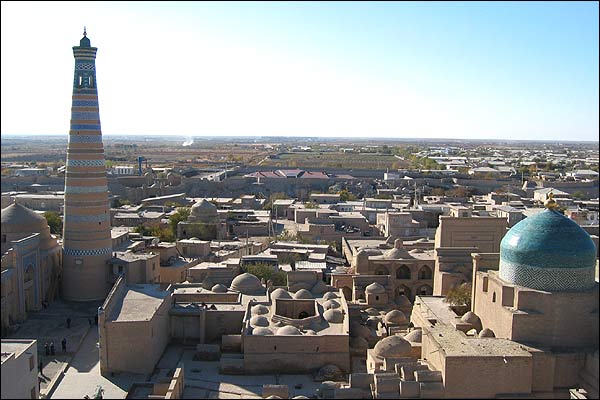
Khiva may be a small city -- its population barely tops 40,000 -- but its history as the best preserved stop on the old Silk Road gives it a broad appeal for tourists tracing the historic trading route. In the Khorezm oasis of the Kara-Kum Desert, Khiva was the capital of the Khivan Khanate from 1592 until the Bolshevik take-over in 1920.
Nobody seems to know exactly how old this ancient city is, though the story goes that Khiva was founded by none other than Shem, the son of Noah (of “and the Ark” fame); at the very least, the city dates back to the 7th century, and probably much earlier. Despite its seemingly romantic history as a Silk Road oasis, the city became most notable as Central Asia’s biggest slave trade center.
For those who’ve seen old cities at their best and worst, Khiva may feel a bit like the Williamsburg of the East, for its genuine dirt and din were swept clean by an aggressive Soviet sanitation in the 1970s. Intent on transforming the traditionally teeming city into a living museum, Khiva was purged of much of its ancient bustle, and its buildings were scrubbed down (or, in the case of some landmarks, such as the 9th century Dzhuma Mosque, rebuilt) and turned into public exhibits.
Khiva is a day-trip city - good hotels and other tourist services are in short supply - but it’s a popular excursion from Urgench. Most of the city’s mosques, minarets and other landmarks, renowned for their delicate majolica tiles and naturalistic paintings, are located in the historic Ichon-Qala area.
Must-sees include the exquisite 19th century Tosh-Khovli Palace, the 225-foot tall Islam-Khodzha Minaret, and Pahlavon Mahmud’s mausoleum, with its proverb-embossed tiles, honoring the great Khivan philosopher and teacher.